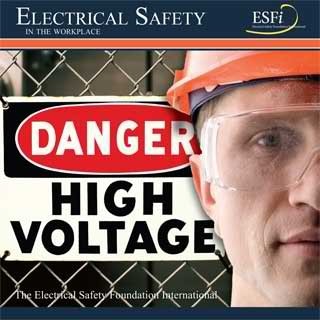The Basics Of Construction And Electrical Safety

Safety during construction work is a major concern on the job, with safety during work on electrical equipment near the top of the list. Electrical power, when installed in residential buildings, has the capacity to inflict severe injury and cause death unless the worker follows several basic precautions and safety procedures. When electricians perform work on electrical equipment in accordance with basic safety measures, risks are minimal.
Hazardous Levels of Electrical Power
Workers can only protect themselves against electrical accidents when they know what voltages and power levels are dangerous. The European Harmonized British Standard BS EN 60950 contains the following guidelines for dangerous voltage and energy levels: 42.4-volt peak, 60-volt direct current, 20 joules or more and 240 volt-amperes or more.
Safe Electrical System Design
Main disconnect switches and main breakers should feature a lock-out mechanism where a small padlock can be inserted to prevent the switch from closing. Fuses should be located after the respective disconnect switch. Breakers or fuses must be capable of carrying the rated currents in their circuits and be able to interrupt the highest possible fault currents. Cables must be sized to carry the rated current of the breaker protecting the circuit.
Safe Practices
The key safety element when working on electrical systems is to ensure that the circuits are not live. Use the lockout mechanism of a main circuit breaker or disconnect switch to ensure that it remains open and nobody inadvertently closes it while work is being carried out. If the job requires work on live circuits, such as during testing, live parts should be exposed as little as possible. Insulating blankets can be used to cover live parts when they are not being worked on and workers must be aware of which parts are live.
Personal Safety Equipment
Risks can be further reduced by using appropriate safety equipment and wearing protective clothing. Work boots resistant to electric shock are recommended. Protective eye gear and rubber gloves may be used. When working on live equipment, insulated tools should be used. If there is a risk of an electric arc, flameproof clothing should be worn. Note that many high-visibility vests are not flame resistant.
Hazardous Levels of Electrical Power
Workers can only protect themselves against electrical accidents when they know what voltages and power levels are dangerous. The European Harmonized British Standard BS EN 60950 contains the following guidelines for dangerous voltage and energy levels: 42.4-volt peak, 60-volt direct current, 20 joules or more and 240 volt-amperes or more.
Safe Electrical System Design
Main disconnect switches and main breakers should feature a lock-out mechanism where a small padlock can be inserted to prevent the switch from closing. Fuses should be located after the respective disconnect switch. Breakers or fuses must be capable of carrying the rated currents in their circuits and be able to interrupt the highest possible fault currents. Cables must be sized to carry the rated current of the breaker protecting the circuit.
Safe Practices
The key safety element when working on electrical systems is to ensure that the circuits are not live. Use the lockout mechanism of a main circuit breaker or disconnect switch to ensure that it remains open and nobody inadvertently closes it while work is being carried out. If the job requires work on live circuits, such as during testing, live parts should be exposed as little as possible. Insulating blankets can be used to cover live parts when they are not being worked on and workers must be aware of which parts are live.
Personal Safety Equipment
Risks can be further reduced by using appropriate safety equipment and wearing protective clothing. Work boots resistant to electric shock are recommended. Protective eye gear and rubber gloves may be used. When working on live equipment, insulated tools should be used. If there is a risk of an electric arc, flameproof clothing should be worn. Note that many high-visibility vests are not flame resistant.
- jid754c29df661ebed7ce50099a0082d41.jpg